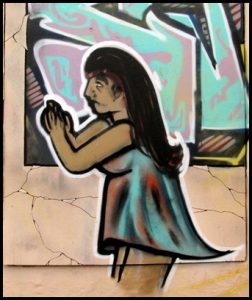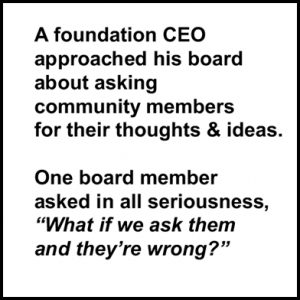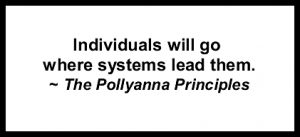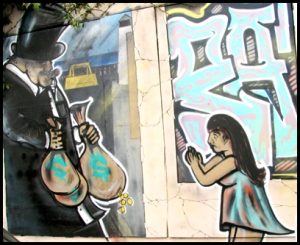What would social change funding look and feel like if it 100% reflected the world it aimed to create?
That is the question at the heart of several demonstration projects for which Creating the Future is seeking courageous and curious partners.
This post will be the first in a series, describing the projects, the intent, the background thinking, the expectations. It is also where we are officially asking you to join us on this journey of exploration.
As we begin, you may find it helpful to keep this in mind:
Unless something is physically impossible, it is possible.
Now buckle up and hold on tight!
What would social change funding look and feel like if it 100% reflected the world it aimed to create?
To create a more people-centered world, where people are valued more than money, social investment itself would value people more than money.
What would that look like in the day-to-day?
Funding would honor and steward all resources, especially human resources (vs. equating money with power and wisdom and only stewarding the cash).
People-centered philanthropy and social investment would be partnerships of equals, exploring and growing together towards the shared vision of a healthy, vibrant place to live (vs. silent financial partnerships, the current norm in social investing).
Using their ability to convene, social investors would bring together all people who care, across all sectors. People would be invited as people first and last (vs. representing “the business community” for example).
Taking that a step further, social investors would not be the only ones doing the inviting to these sorts of conversations. When others would invite those funders to participate in issues-focused conversations, it would be because they value the knowledge and experience of those individuals who happen to be funders; not because they want those funders “in on the ground floor, so that maybe they will give us money.” Social investors would be valued equally as everyone else in the room, not put on a pedestal or disdained (or both) because they happen to have money.
Social investors would value their own exploration, humbly applying what they learn to their own work, acknowledging that when it comes to creating the world we all want, there are no “experts” – we are all building the path while we walk it.
Because money is always a means and never an end unto itself, financial statements would be one of many pages in a report detailing all the community resources that have been activated and engaged as a result of the investor’s efforts. Balance sheets would balance all assets – including and especially people – with community improvement as the measure of results (vs. money in the bank as the measure of results).
 To create a world where there is enough for everyone, social investment itself would reflect the Stone Soup reality of Collective Enoughness, acknowledging that together we have everything we need, and that it is only alone that we experience scarcity.
To create a world where there is enough for everyone, social investment itself would reflect the Stone Soup reality of Collective Enoughness, acknowledging that together we have everything we need, and that it is only alone that we experience scarcity.
What would that look like in the day-to-day?
Social investors working to strengthen low income communities would apply that same compassion and sense of justice to the organizations they support.
“Competition for scarce resources” would no longer be the underlying assumption of resource allocation, forcing like-minded groups to battle each other for the means to do good work. It would be the norm, not the curious exception, for investors to find ways to fund everyone.
Emphasis on money would be replaced with emphasis on the things the money buys – talent, wisdom, connection, buildings, equipment, access – encouraging everyone to add what they have to the “Stone Soup.”
When like-minded groups no longer have to fear that sharing ideas will lead to stealing ideas (i.e. losing funding for those ideas), the question guiding all collaborations would be, “What can we accomplish together that none of us could accomplish on our own? And what resources do we have together that, individually, we only have a small portion of?”
Social investors’ go-to reflex would be to collaborate with other social investors, starting with doing their organizational planning together.
Social investors would be seeing their own resources as far more than just their dollars, exploring ways of participating alongside others in their community by sharing all those resources (vs. assuming all they have to share – or the most important thing they have to share – is their dollars).
By creating a community culture that values all resources (people, physical assets – from copy machines to empty buildings to dollars – knowledge, experience), social investors would be invited to participate in early conversations of issues, not for their money, but simply as members of the community with the same types of assets as everyone else – experience, knowledge, community connections.
To create an economically equitable world rooted in democratic ideals of fairness, social investment itself would resemble a town square, not a hallowed hall.
What would that look like in the day-to-day?
Democratic, equitable philanthropy and social investing would walk the talk of the macro economy they want their efforts to create.
 Specifically in the world of philanthropy, where the dollars granted have been exempted from the tax base, foundations would assume that the resources they husband and then invest do not belong to them, but to the community. Decisions about allocation and investment of those resources would be made by the people who live in the community.
Specifically in the world of philanthropy, where the dollars granted have been exempted from the tax base, foundations would assume that the resources they husband and then invest do not belong to them, but to the community. Decisions about allocation and investment of those resources would be made by the people who live in the community.
Foundation boards would be filled with community members who deeply understand the place where they live (and could easily be taught about legal fiduciary duty), replacing boards filled with corporate leaders who deeply understand finance and see fiduciary duty as their primary role.
To create a world where strong communities routinely create resilience by nurturing their collective strengths, social investment itself would be aimed at building that capacity in communities.
What would that look like in the day-to-day?
Social investment would focus on community first, seeing organizations as catalysts for community capacity.
Social investors would be seeking investment models rooted in the power of people to help themselves, without assuming that community change is always best initiated by organizations.
Funding for “capacity building” would aim at building the capacity of communities to organize organically, to effectively address needs and opportunities that arise. The inquiry guiding such efforts would focus on the most effective path to ensure that individuals and groups in their communities have the capacity to work together to create the future they want to see, each participating with who they are and what they have (a spirit of Stone Soup).
When funding is aimed at building organizational capacity, that funding would favor initiatives that explicitly link their organizational capacity building to community capacity building (vs. assuming that building strong orgs will naturally result in stronger communities – an assumption with no basis in fact).
Strength-based social investment would be tethered to the future people want to create in their community vs. reacting to what they do not like about their community (reactive problem-based investment).
What Would it Take for This to Be Reality?
Unless something is physically impossible, it is possible. And nothing in the preceding section is physically impossible. It may feel difficult or unlikely, but it is not impossible.
- Social investors want their work to have significant impact.
- Many people in the field of social change are frustrated that they have not achieved the level of social change they believe is possible, with fads like the “measurement / logic-model movement” and the “run-like-a-business movement” coming and going in reaction to that frustration.
- Social investors have a ton to build upon, to create the communities they want to see. The most meaningful of those assets are not their money, but all the non-money assets described above – intention, passion, knowledge, connections, experience, the desire to learn.
For 15+ years, we have been researching and experimenting to get to the heart of what actually creates the change we all want to create. Our base question has been this:
The US Civil Rights Movement, the Indian Independence Movement, the South African Freedom movement – these movements all evidence that dramatic social change can and does happen.
What is happening when significant, sweeping change happens?
And how can we infuse that formula into all work, done by everyone, everywhere, so that humanity is routinely bringing out the best in each other and our communities?
In all that research and experimentation, our most significant finding – the one that became the heart of our theory of change – was this one:
It is not what change agents DO, but the assumptions behind those efforts, that determine whether or not their work will create meaningful change.
I will go into more detail about the power of assumptions (and the questions that create them) in another post. For now, the most important finding I can share is this:
There is a path to greater impact.
The path requires that foundations and social investors look inside at their own assumptions, and how those assumptions have unintentionally created systems that perpetuate the very conditions they are seeking to change.
 If social investors want a world that celebrates the power and collective resource that we, as a planet, all share, a world where we bring out the best in each other and aim for what is possible – those results will only occur when that vision is embedded in the systems that guide all their actions.
If social investors want a world that celebrates the power and collective resource that we, as a planet, all share, a world where we bring out the best in each other and aim for what is possible – those results will only occur when that vision is embedded in the systems that guide all their actions.
What We’re Proposing / Inviting You to Be Part Of
Over the next several posts, I will share our thoughts about an effort for which we are seeking partners to explore alongside us:
Planning together for how a capacity building organization can…
a) define “mission accomplished” in the context of the community change they want to see; measure progress; and accomplish that mission
b) create a sustainable “business model” to ensure that effort has the resources to accomplish the mission (the bane of every capacity building org)
Just as we are asking philanthropists, foundations and social investors to put their very being on the line in this effort, Creating the Future is doing the same. We are resisting the temptation to fund our work in ways that go counter to the world we want to see. Instead, we are seeking partners in the very truest sense of that word:
- Partners who will learn alongside us together.
- Partners who will apply what they learn to their own work (by far the most important piece).
- Partners who will each put into the Stone Soup pot all they have to offer – their wisdom, their resources, their expertise, their connections, etc.
Upcoming Posts
Over the coming weeks, we will be posting the following (and likely other posts, that will be generated by writing these!)
- Details about Creating the Future’s motivations and desired results of these projects (Click through to Post #2 here.)
- Project approach – the frameworks we will use, the pre-project “sleuthing” effort that is kicking off with these very posts
- Project details (as we currently see them, which we know will change via what we learn in our sleuthing)
- Learnings (ongoing) from our first “Foundation Philanthropy Demonstration Project” in Westmoreland County, Pennsylvania
- Issues we already know we are likely to encounter, including the ever present issue of “How to bring foundation boards along?”
- Ways to participate in these projects
For now, stay tuned.
And please, our first step will be connecting with people in the funding arena – people who live by their curiosity and desire to learn and explore. We are in information gathering mode (more on that in another post). So please let us know if this sounds even remotely intriguing to you. We’d love to chat and begin the process of learning from each other!
We have a ton to learn, and we can’t wait to meet all the co-learners and teachers who will help us create what is possible!
Mural: Downtown Santa Barbara


By the time I got to the end of this post, I had broken out in a sweat! All the way through, I had to keep reminding myself that if it is not physically impossible, it is possible. This is such a deeply felt and beautifully articulated vision for change, for which I sincerely thank you. It will take some time to digest it all, but what sticks out for me at this point is how we must work to understand and move past the assumptions that have underpinned our efforts for so long. Once we are able to do this, we will be able to see and be the sweeping change that is already in your head. You are way beyond rock star stage Hildy — you are a mountain star! Can’t wait to see what will follow.
We are excited to be at this point, Gail. And if we are getting folks sweated-up, then we are absolutely doing our job! I hope you’ll invite folks along on this journey with us. We really truly want to learn all together – the only way change happens. Thanks for being part of this work, Gail. Happy to have you on the mountain here with us! HG